About the nano aquarium
Table of contents
When we think of nano aquariums, the rather inglorious goldfish bowl is often the first thing that comes to mind. Fortunately, however, aquaristics and the understanding of animal welfare have evolved so that these vases with fish bouillabaise have finally disappeared from German living rooms. It doesn't always have to be XXL, there's room for dreams in nanocubes, too. And nano cubes can certainly be defined as aquariums with a volume of between 10 and 54 litres, although it should not be forgotten that fish keeping should only be considered from the latter size.
Should it perhaps be an underwater playground or rather a lovingly designed underwater landscape ranging from mountains to jungles to majestic gardens? Aquatic plants in particular make an enormously important contribution to microbiology. For this depends on various factors and must develop. Plants play a decisive role here in minimising excessive nutrients in the water, becoming important oxygen suppliers through photosynthesis and standing up to annoying algae. But the well-being of fish and invertebrates can also be strengthened by plants because they offer protection and a place to retreat.
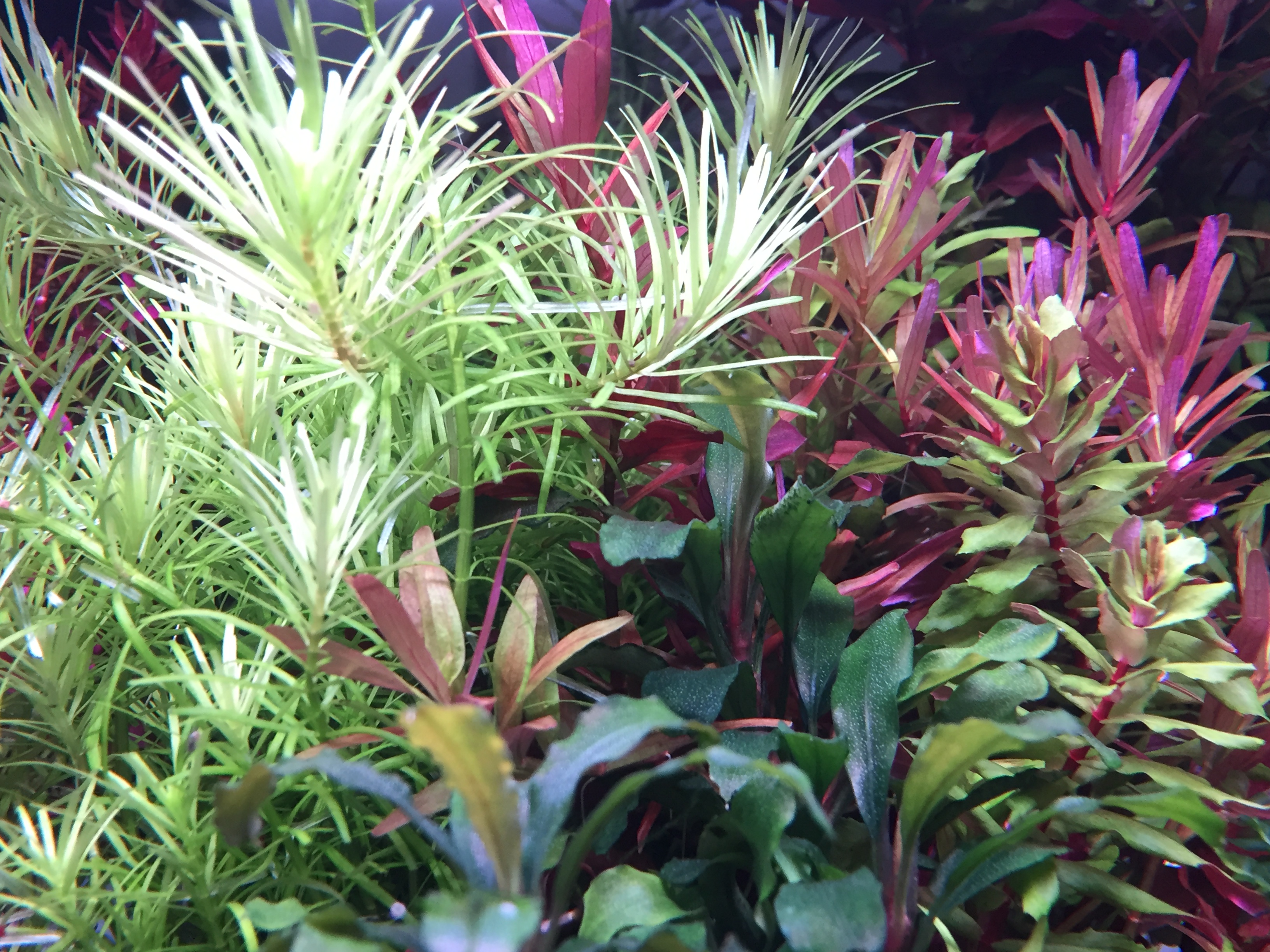
Photo: Lou Herfurth
From model construction to aquarium designer
What today is so-called aquascaping was probably once the famous model railway, which was tinkered with, glued and lovingly painted for hours and days until the work of art was completed and the first locomotive rolled off, through mountains and tunnels, over flowering landscapes and reached the first station down in the village. As we can see, all trends repeat themselves, some with different faces and perhaps more in the living room than in the cellar. They have one thing in common: in the incredible range of possibilities, about the same value can be invested. There is often only a fine line between standard and high-tech.
Aquascaping refers to the creation of a landscape under water. Imagine, for example, a postcard of the Swiss Alps, the Lüneburg Heath or perhaps a snapshot of Mato Grosso. We can recreate all of these underwater with the help of different "hardscape" and the corresponding plants. And now imagine a group of dwarf shrimps conquering these mountains, with a group of iridescent dwarf danios, such as Sundadanio axelrodio, swimming above their peaks!
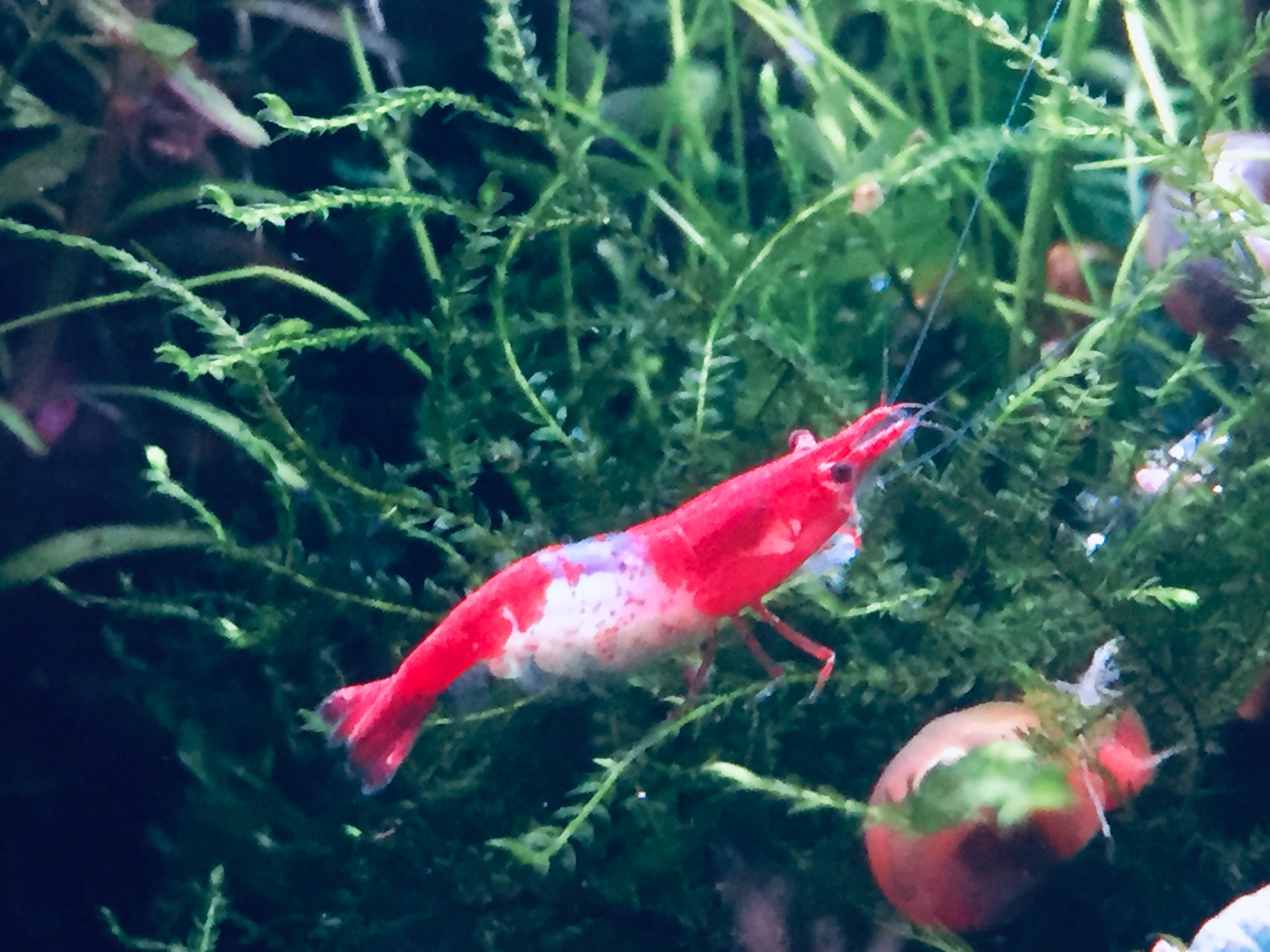
Photo: Lou Herfurth
However, small aquariums, unlike their larger brethren, have limited height, so the choice of aquatic plants needs more attention. Most standard plants quickly reach heights of 40 to 60 cm and lie on the surface of the water, obscuring parts of the light from slower and shorter growing plants, which can then start to care. The previously made decision regarding the new co-inhabitants also plays a role in the plant selection. Invertebrates such as dwarf shrimps and crayfish need a place to retreat to during moulting, and they like to use fine-fibred plants and mosses here. But some so-called mini fish can also be a little shy, especially at the beginning, and like to hide in a thicket to recharge their batteries. As with the large aquariums, fast-growing plants are recommended, especially when setting up a new aquarium, as they quickly absorb a lot of nutrients and thus help to stabilise the water values.
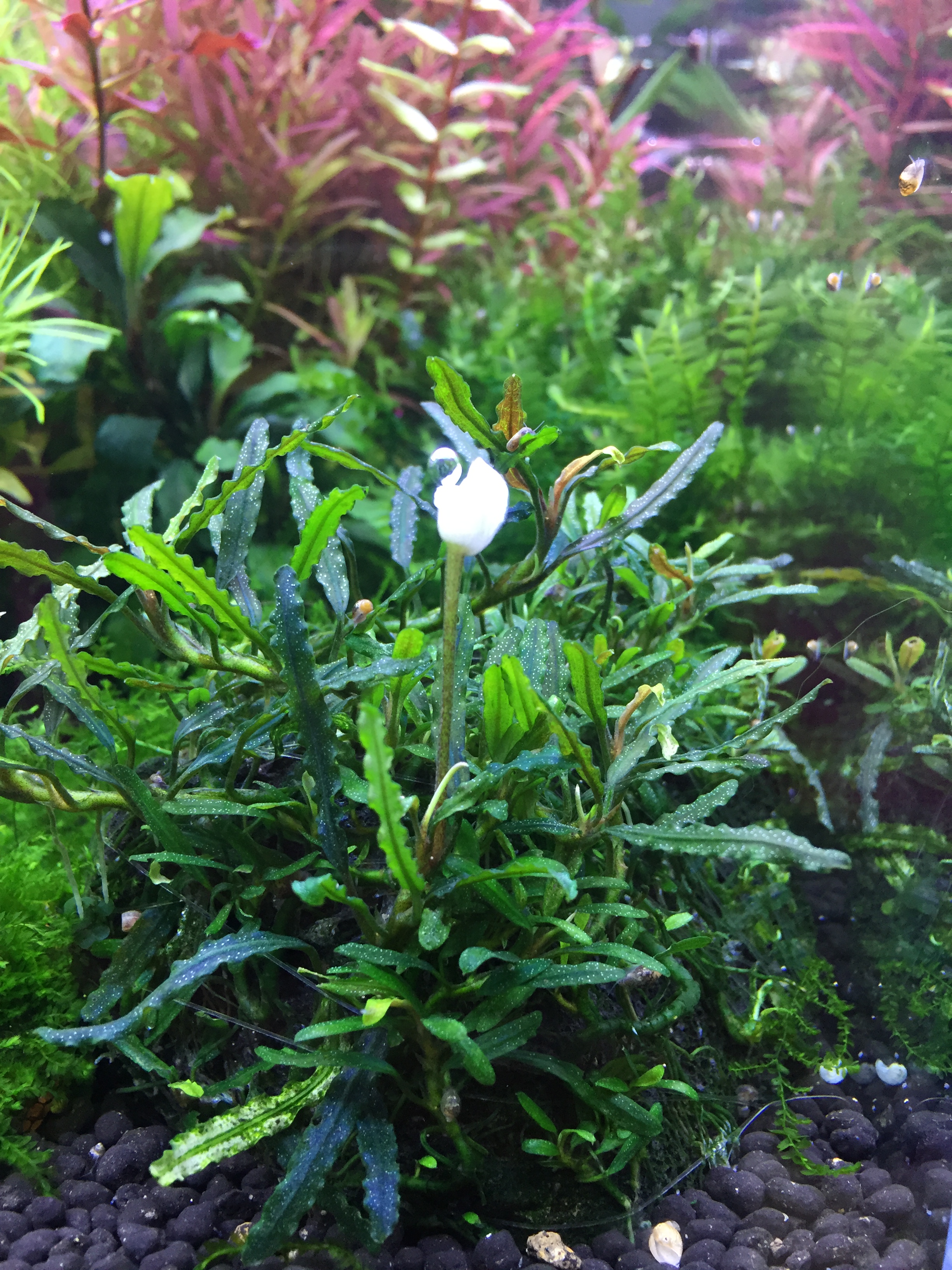
Photo: Lou Herfurth
From the bottom to the top
The substrate also plays an important role in a nano aquarium, because the rule "everything that lives wants to eat something" also applies to aquatic plants. Some take up most of their nutrients through their leaves, others through their roots. Especially for the latter, a nutrient-rich substrate should be placed under the aquarium gravel to provide plants with optimal nutrition and thus achieve healthy growth and full colour development. In an aquascape, the aquarium is set up dry in places and planted afterwards. As soon as mountains and landscapes have been created, empty spaces are filled with gravel or soil. Roots and stones are planted with perennials and mosses beforehand and covered with damp material for the duration of the installation to prevent them from drying out. Most types of moss can be stuck on quickly and easily with a plant adhesive and will continue to grow under water. This is a nice option in contrast to tying them on with dark cotton thread, which requires some craftsmanship and may present a visible string at the beginning that later becomes completely overgrown. There is also the possibility of curious fish getting tangled in loops and getting their gills caught, which, discovered too late, usually ends in drowning.
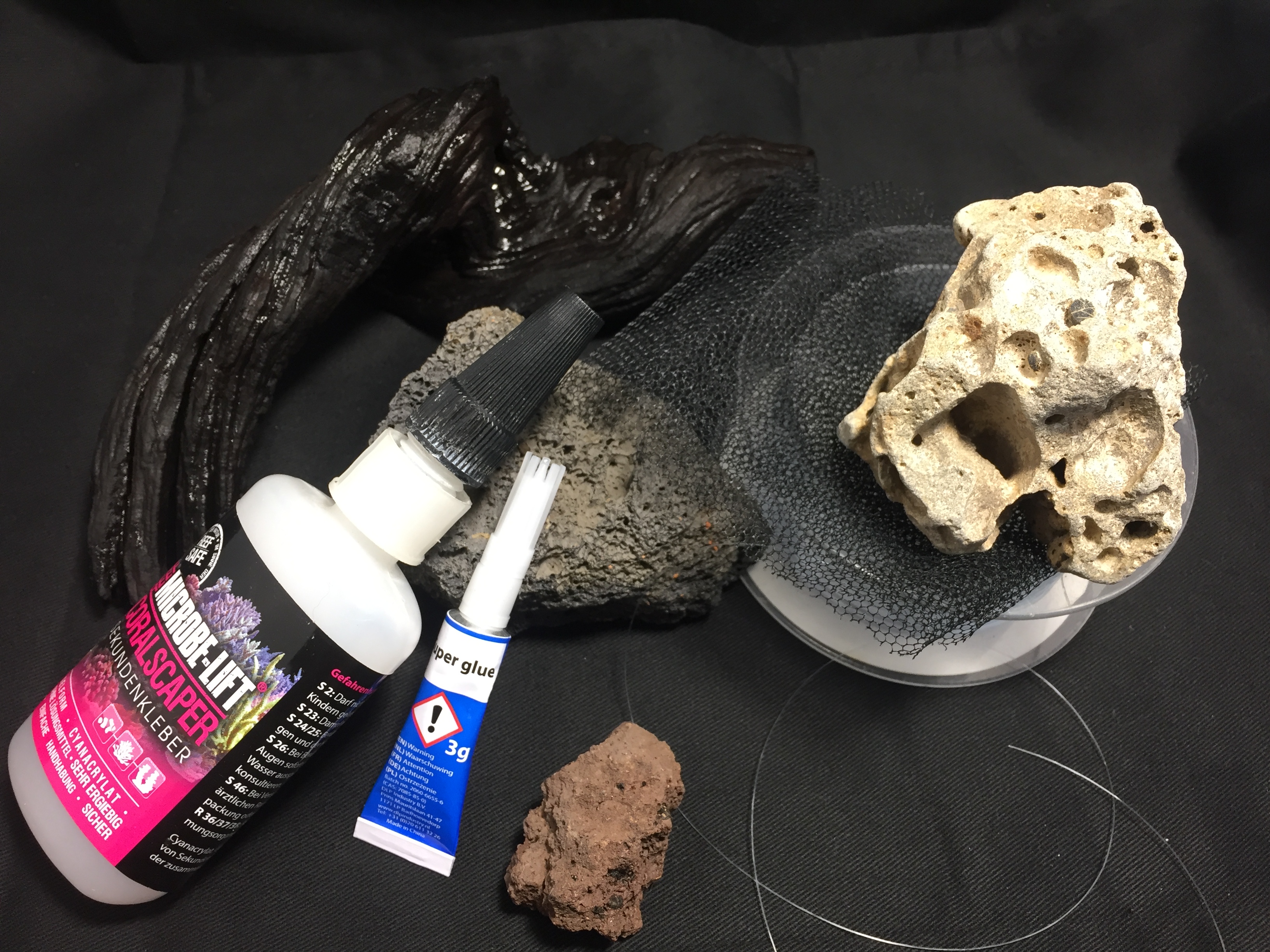
Photo: Lou Herfurth
Small underwater nursery
When choosing your new plants, you should also consider their possible final size, as well as their light and nutrient requirements. If you want to keep a hard-water nano with Neocaridina shrimps and robust dwarf fish, some plants that tend to come from acidic habitats with low pH values will thin out very quickly, lose their colour and leaves and mutate into the "Mikado stick paradise" mentioned above, which is not nice to look at and no longer provides support for the animals you are keeping. Dying plants also pollute the water. In a soft-water landscape with low carbonate hardness and acidic pH values, a rather larger selection of plants and mosses is also advisable, if only in the selection of animals, as most animals and plants that are kept in aquariums come from acidic habitats.
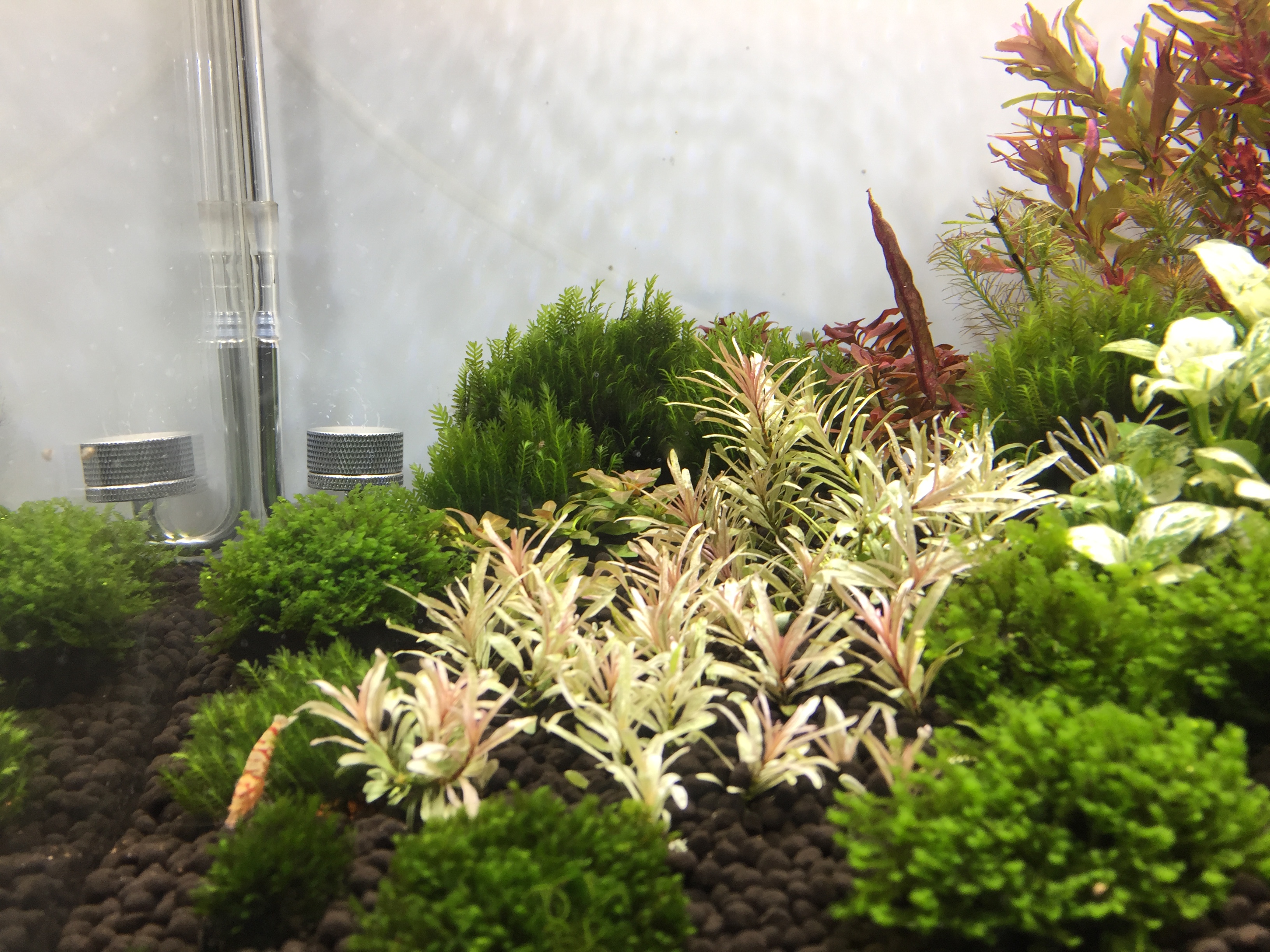
Photo: Lou Herfurth
The big three
Last but not least, we should remember that an aquatic plant is always dependent on three important factors: a well-nourished substrate, lighting that is appropriate for it, and a source of carbon. It is precisely in these three points that people tend to save money, unfortunately usually at the wrong end. Volcanic substrates, full to the brim with minerals and nutrients, offer the best conditions, especially in the beginning, to transform your aquarium into an exploding underwater jungle in no time at all. Artificial, possibly coated, brightly coloured gravel may be a matter of appearance, but unfortunately they only offer an empty plate to the hunger of a freshly planted plant, which makes it much more difficult for it to take root.
In lighting, too, thanks to the latest LED technologies, we are already on a good and still developing path with full-spectrum LED tubes, which are at the same time low in power consumption and almost no longer comparable with efficient but outdated HQI burners. Plants (also) feed on CO2. Without a suitable carbon source, your plants will grow somehow, but not in the splendour they could display. Not only does inhibited plant growth open the door to algae growth, but also caring plants contribute little to oxygen production, the maintenance of stable water values and the well-being of your animals.
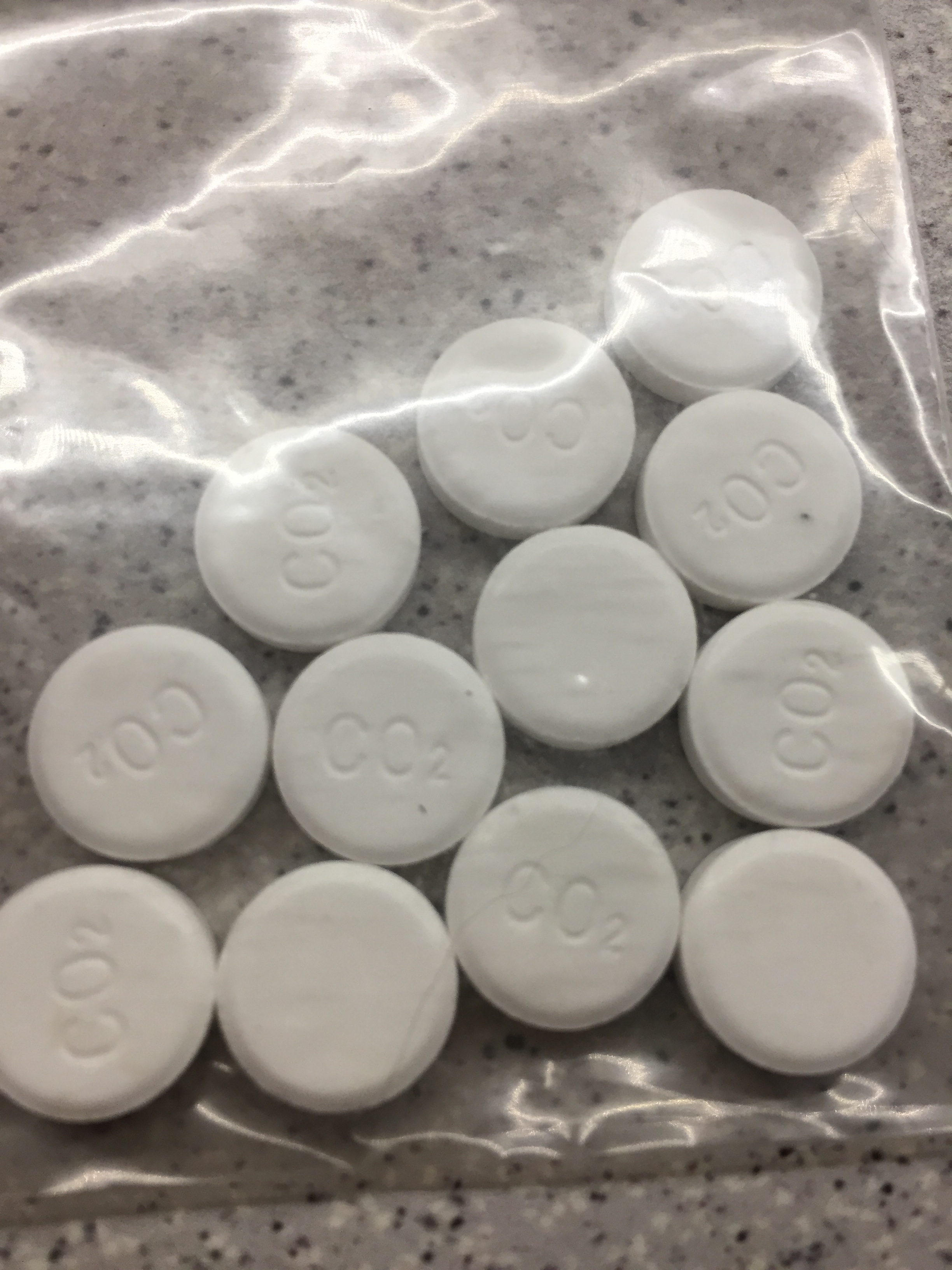
Photo: Lou Herfurth
CO2 can be added in different ways, and here, too, the choice is yours! Various fertiliser systems with integrated pH and temperature controllers, with solenoid valves and night shut-offs are available in the trade, which already enrich the returning aquarium water when connected to the external filter. In nano aquariums, where everything is a little more delicate and delicate, so-called nano CO2 systems with diffusers and reactors made of glass already offer wonderful services, which also blend into the overall appearance, but can also be hidden behind stem plants quite easily and without complications. Another option is CO2 tablets that are integrated into an internal filter. Liquid carbon can also be added with glutaraldehyde, which has to be dosed manually. An automatic CO2 fertiliser system offers the advantage of a constant supply of nutrients, which also stabilises the pH value, prevents value fluctuations and is inexpensive to refill.
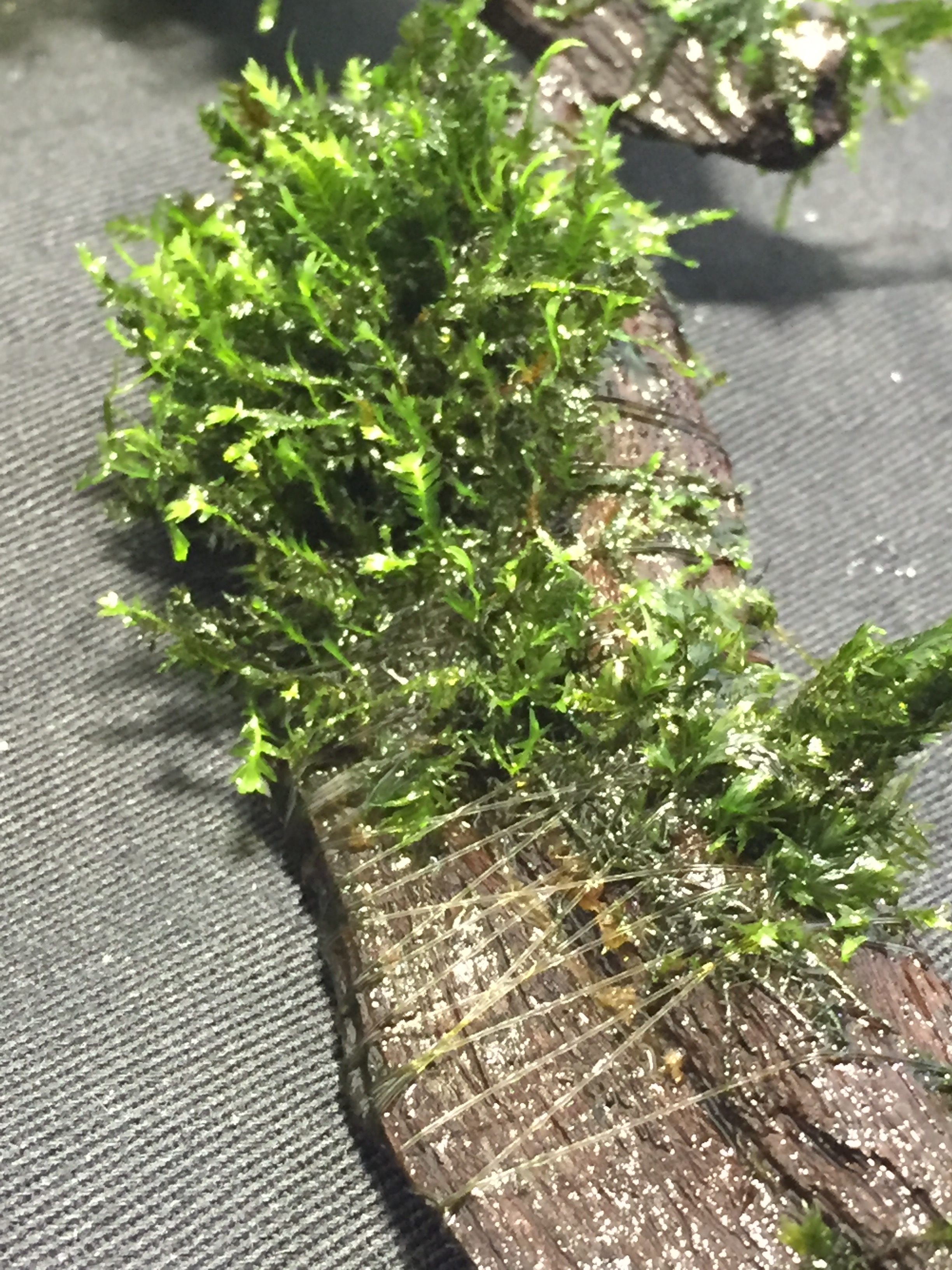
Photo: Lou Herfurth
The Hardscape in the Layout
At the latest when we start looking at rocks and woods for the aquarium, we will quickly realise that the choice is enormous. But even here there are numerous differences and peculiarities that need to be taken into account. Not every stone and root we found while walking in the forest is suitable for the new project. Conifers, for example, are unsuitable because they contain tannins. It is also usually unknown what the woods we find are contaminated with. But stones are not just stones either. Depending on the type of stone, minerals may later dissolve in the water and influence our water chemistry. Once we have painstakingly added plants to them and built them into our layout, it will be difficult to bring it down by removing them. The most suitable products are actually those offered in the shops.
When buying these things, you should draw the footprint of your new aquarium on paper and take this cut-out with you when you go shopping. You will be amazed at how "small" the aquarium suddenly appears when you arrange the first stones and roots on the floor plan to find the perfect individual parts! When buying roots, be sure to place them in a large bucket of clear, cold (!) tap water before placing them in the aquarium and, if necessary, weigh them down from above. The roots will then not only soak up water and gain weight (otherwise they would float in the aquarium for quite some time!), but some types of wood will also "bleed", which would cause the famous "black water effect" in the aquarium. Change the water in the bucket so often until no more colouring is visible. Some woods develop a kind of "mould" after a while in the water. This is due to the sugar residues remaining in the wood and is no cause for concern. Although these can always be scrubbed off with a brush, these infusoria and bacteria serve as food for invertebrates and aufwuchsfressende fish and also disappear on their own, so that soon none are visible.
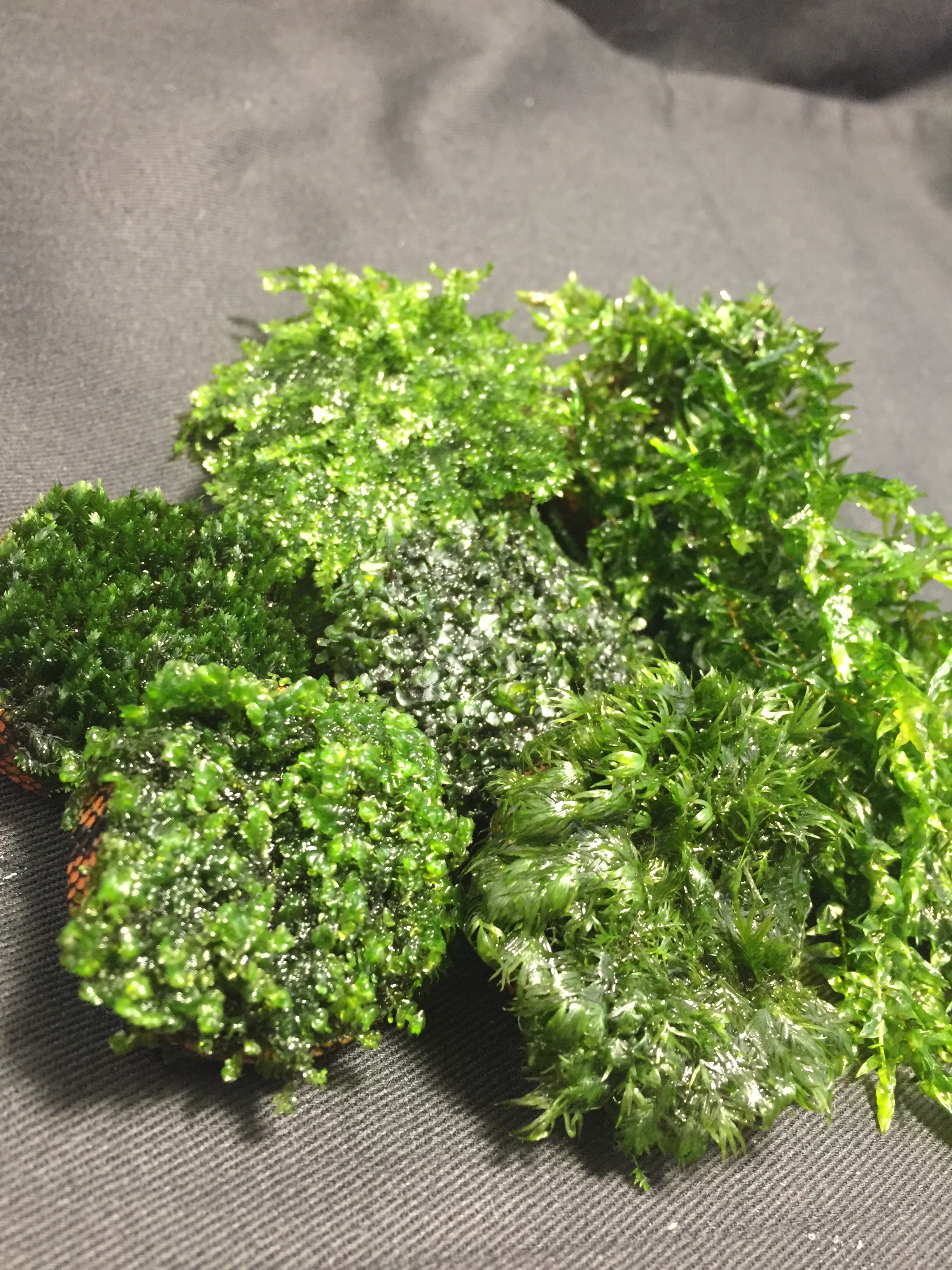
Photo: Lou Herfurth
No moss, no nothing
The choice of mosses also depends on our layout. Depending on the effect we want to achieve and our nutrient supply, different varieties are suitable for different impressions. Simple and dense, very short, moss cushions we can already achieve with moss balls, which are in fact algae balls, by gluing them on cut open. A very simple one with upright growing shoots is Fontinalis antipyretica "Giant Willow", which due to its size would even be more suitable for the rear pool area. Hanging cushions can be achieved with Versicularia ferriei "Weeping", which provides impressive contrasts and depth effects. A small moss with upright twisted shoots is Taxiphyllum sp "Flame Moss", which provides great contrasts especially on dark roots. Probably the best-known and simplest moss is the Java m oss Taxiphyllum barbieri, which is quite undemanding, grows relatively quickly and is also used by fish as a spawning substrate. However, if you have patience and a green thumb, more demanding and sometimes rarer mosses can be used, such as Fissidens fontanus (Phoenix moss), whose short soft shoots resemble down and form dense cushions. Coral m oss(Riccardia sp. "chamedryfolia"), on the other hand, forms light green, firm and filigree cushions, whose growth is indeed reminiscent of corals and is a great eye-catcher in the aquarium. If tiny round leaves are desired, Hydropogonella gymnostoma is suitable, which is a relatively easy moss to cultivate, but difficult to obtain. Even smaller leaves are offered by Solenostoma tetragonum (pearl liverwort), whose slow and compact growth is almost reminiscent of broccoli.
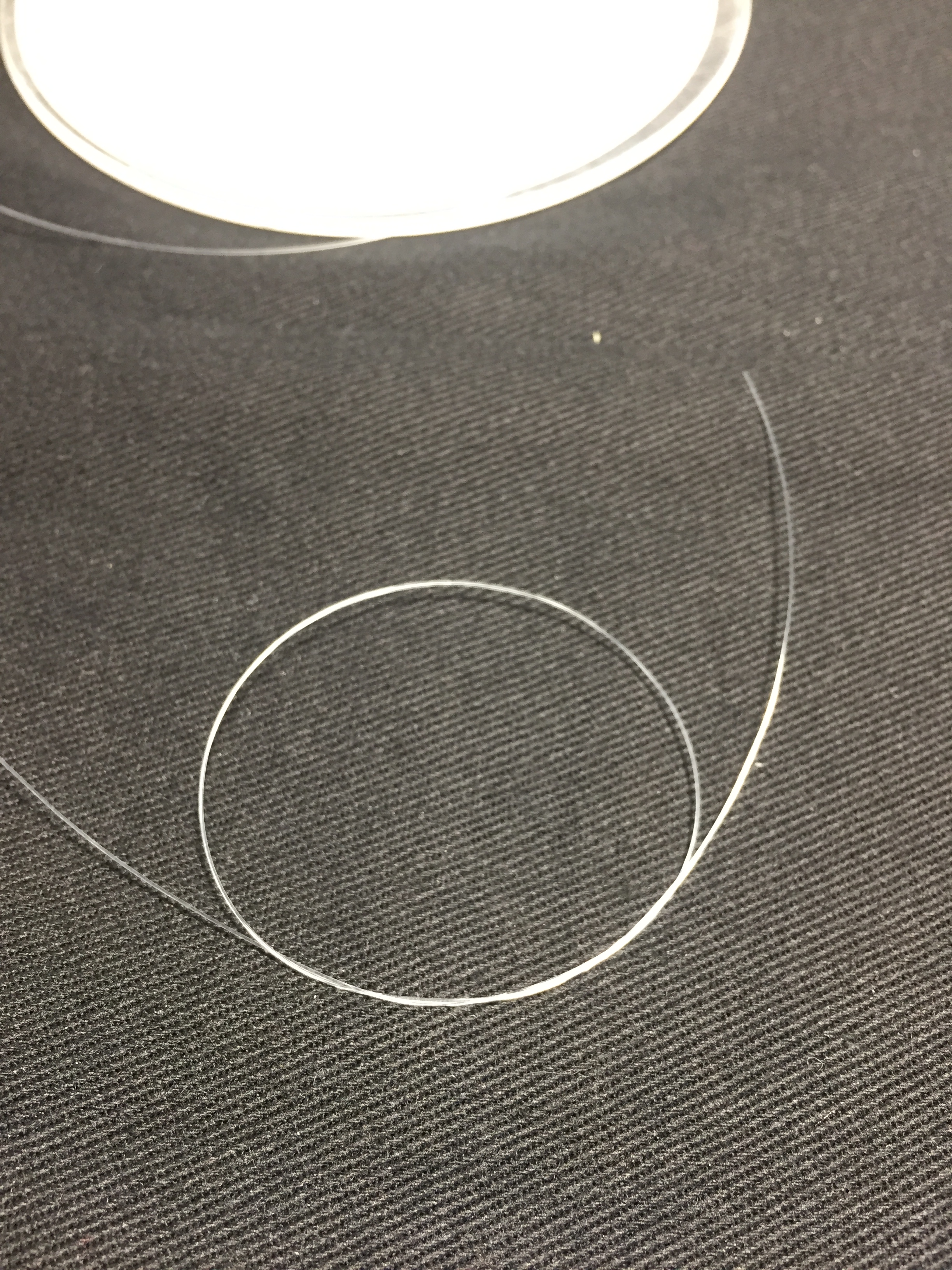
Photo: Lou Herfurth
Glue or bind
Once we have agreed on the size of the aquarium, the future animal population, the technical equipment and have selected the plants, it's time to get creative. It can be helpful to draw the layout beforehand, or perhaps even a postcard or a picture of the landscape that is to be designed. So let's now deal with the greening of hardscape. By hardscape we mean the parts of the layout that consist of roots and wood and are now gradually planted with plants and mosses. In general, there are different ways of doing this. As already mentioned, gluing on is one of the easiest methods for quick and targeted decoration. The surface to be glued on should be cleaned, and depending on the idea, the glue can be dripped onto a surface and rubbed in, or applied lengthwise, e.g. onto a root. Mosses in particular, such as the very simple Java moss, can now be "plucked apart" and pressed into the glue. To avoid visible glue spots later, use less glue, alternatively the moss can also be glued in layers. This creates a great effect, but make sure that the vegetated area gets enough light later on in the aquarium. The moss will continue to grow on the root after a short time. If it becomes too lush, it can be shortened or plucked off under water with scissors and the floating clumps of moss can be fished out with a net. These can also be redecorated.
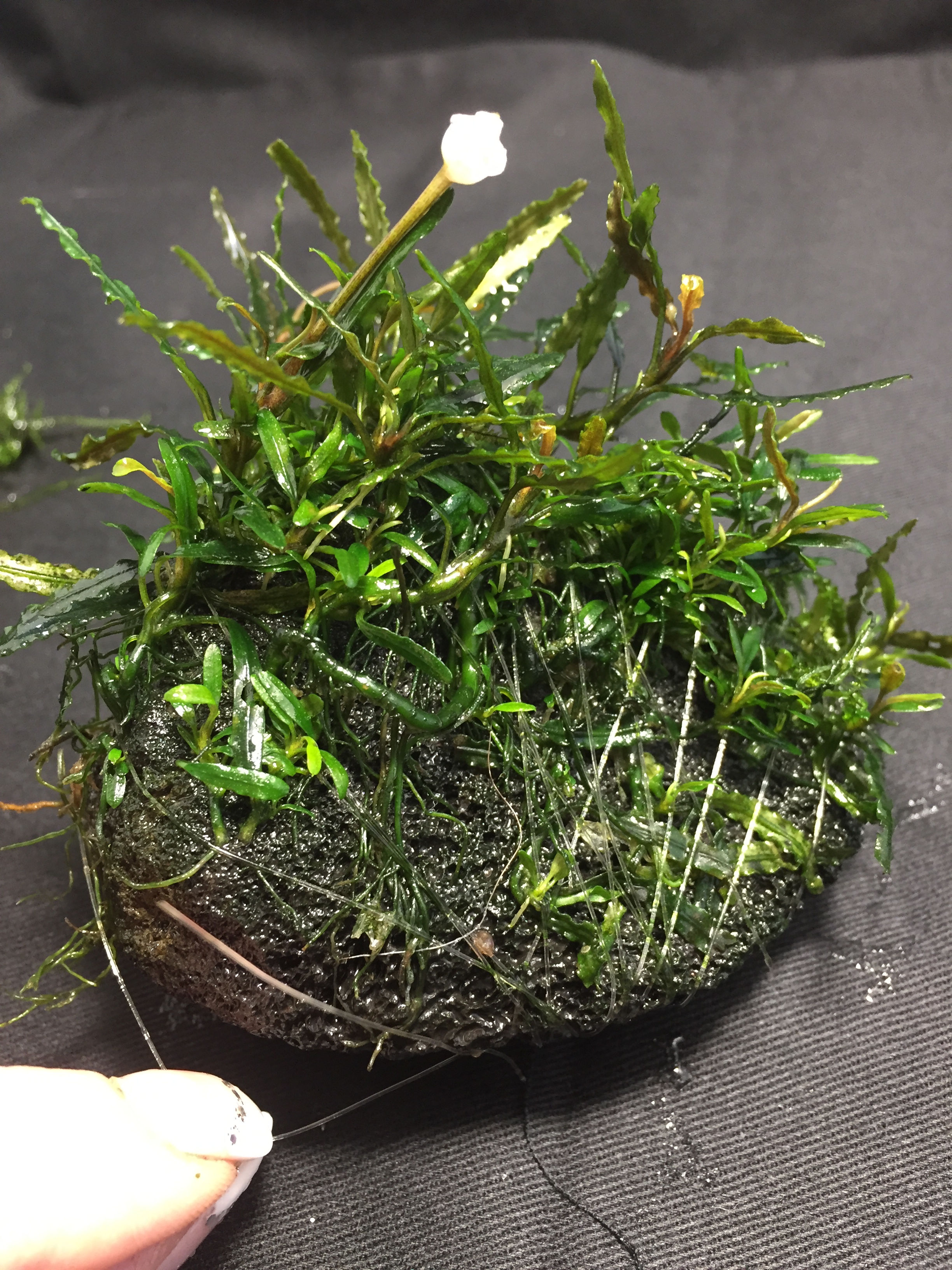
Photo: Lou Herfurth
Two other options are to tie them up: either with string, but more professionally with flyscreen gauze. To do this, lay the moss loosely on a stone, place the taut gauze over it with spread fingers and wrap the entire stone in it. Knot the ends with string on the underside. If you have already made the double knot in the string, you can simply put the loop over the ends and tighten the knot all at once. Instead of gluing, mosses can also be placed in crevices between stones, where they soon grow firmly and multiply.
Similar is possible with various perching plants such as anubias, bucephalandra and java fern. These three should not be placed in the substrate, as their rhizomes will start to rot and the plant will die. Perennial plants can also be fixed in crevices, if necessary with a drop of glue, or they can be glued or tied to roots and stones with the rhizome. If you don't want to glue or string larger stones of the layout, you can also fix your plants on fragments of roots or stones and decorate these smaller works of art into your scape in such a way that it appears "wanted" later. The advantage of this is that the plants remain mobile and can be lifted out of the water for maintenance. Perennial plants reproduce via their roots. Java fern, which comes in different varieties and sizes, is viviparous, so to speak, and after a while will "shed" a small offshoot, which in turn can be redecorated. Java fern also sprouts new offspring at the tips of its leaves. Anubia and Bucephalandra also produce offshoots, which you can recognise by new root nodes that develop both leaves and roots. You can separate these from the mother plant quite easily with a sharp cut and replant them. It is important not to damage the plant by bruising it, a sharp and clean scissor blade will hardly harm the plant.
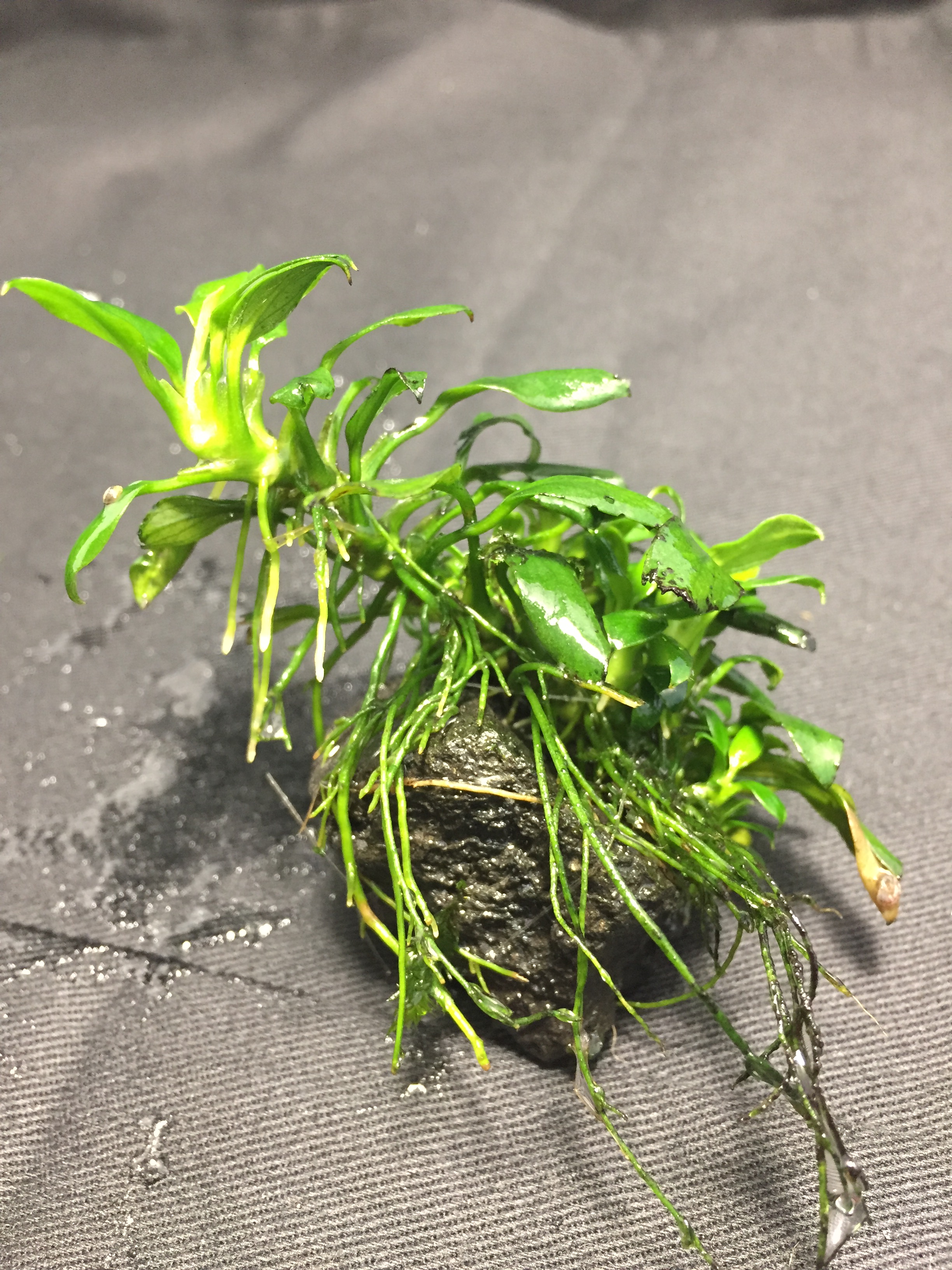
Photo: Lou Herfurth
Some dwarf spear leaf species (Anubias) grow very large, so pay attention to the possible final size before buying. Nano-suitable small-leaved varieties would be, for example, Anubias barteri var. nana "Mini", "Petite" or "Bonsai", but also "Pangolino". These species are particularly robust, easy to care for and require very little light, making them ideal for planting in rather shady corners. You can achieve a colourful accent with Anubias barteri var. nana "Pinto", which has white leaves with green leaf veins as well as green and white spotted leaves. As its leaves grow somewhat larger, it is better to place them further back and down so as not to cast a shadow on the plants below.
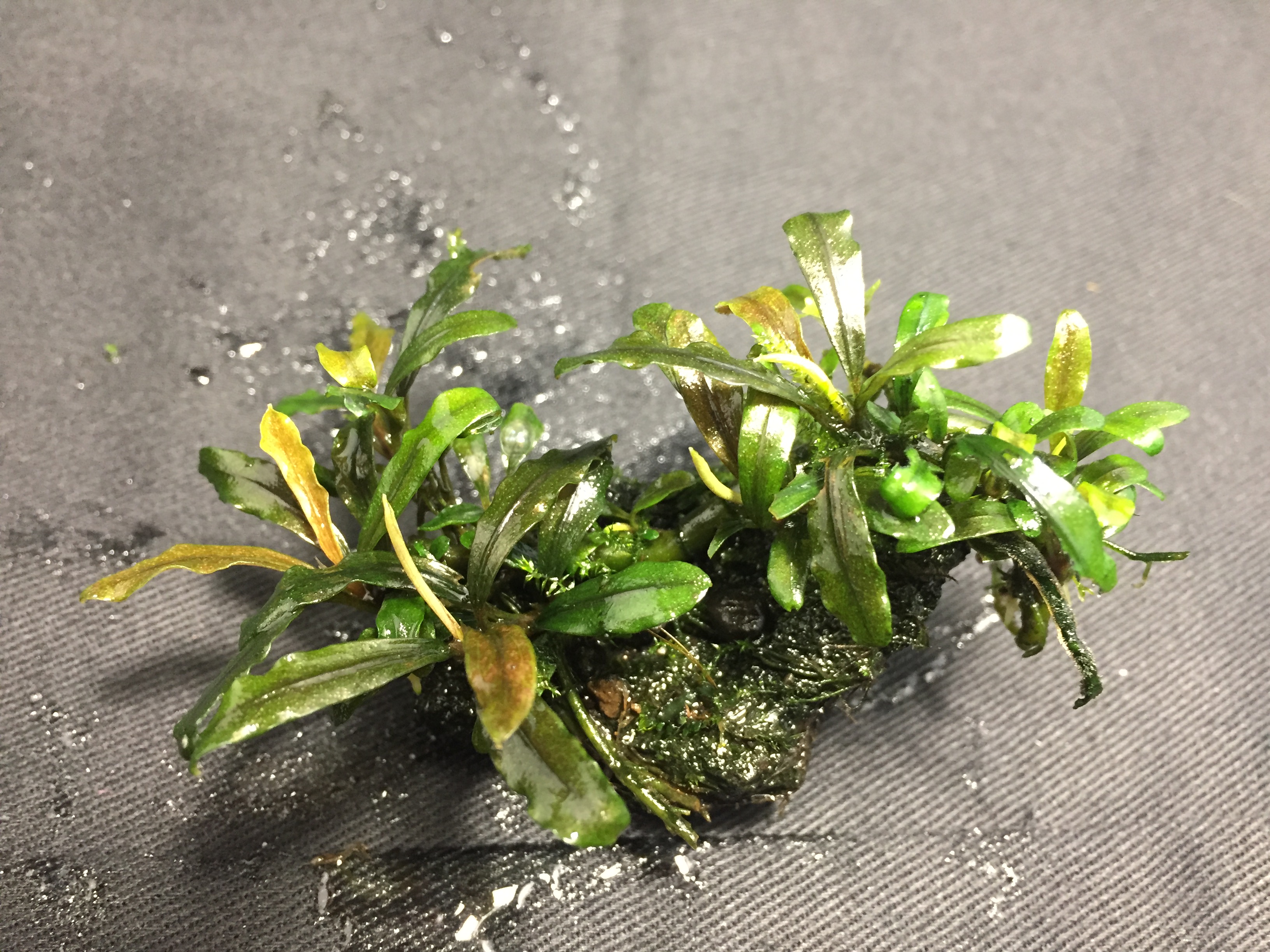
Photo: Lou Herfurth
Most Bucephalandra are narrow-leaved anyway, sometimes with very small and short leaves, and the range now available can become quite unmanageable. However, they do offer quite a few colour accents with which you can create great effects in your ornamental. Leaf colours range from various shades of green to reddish, golden and even violet leaves, some of which change shape and can even form wavy edges.
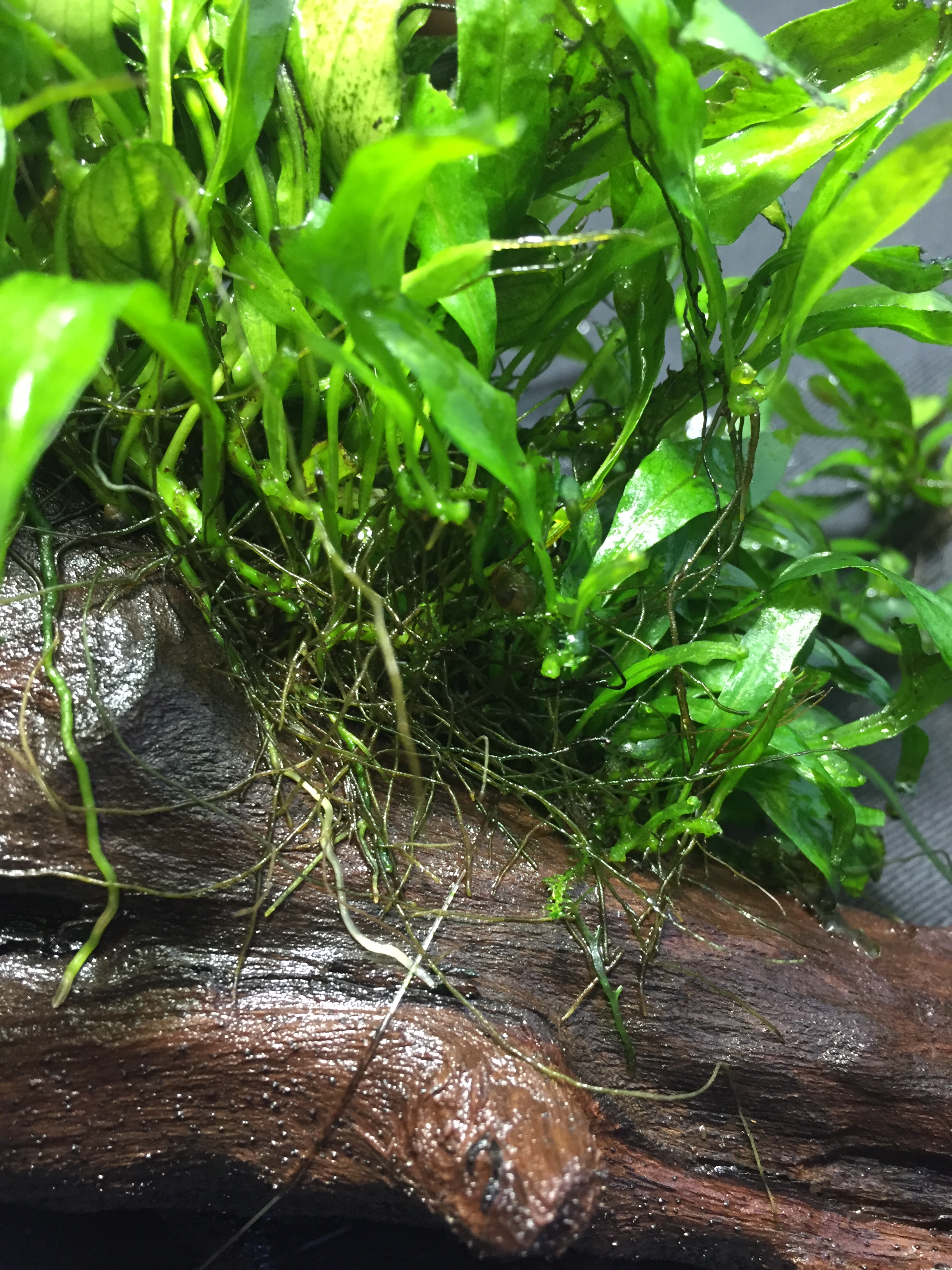
Photo: Lou Herfurth
With Java ferns you should also pay attention to the possible final size of the plant. For example, Microsorum pteropus "Petit" and "Orange Narrow" are more suitable for the middle to back of the aquarium, Microsourm pteropus "Short Narrow Leaf" for the middle to front. Although it takes a little more practice, these perennials are suitable for tying up with cotton or fishing line, the latter being a little easier to handle but requiring precise knotting technique to avoid loops forming or the line coming loose again. When tying on the roots and rhizomes, be careful not to tie them too tightly, as this will cut them, but to fix the plant so flat that it roots easily on the new substrate. Gluing on is also an option.
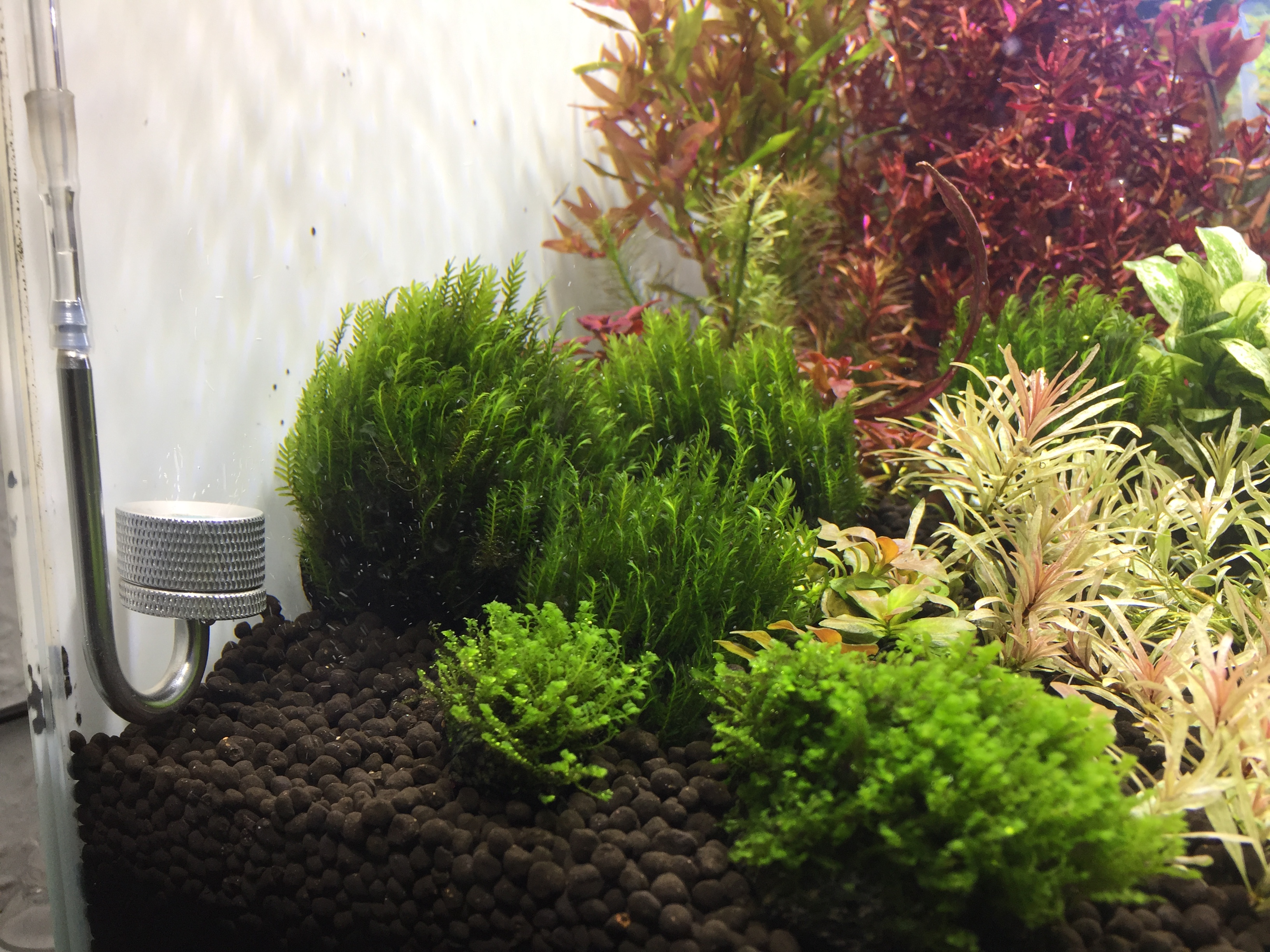
Photo: Lou Herfurth
From back to front
Once you have placed your topdressers and mosses and covered them with moisture, start inserting stem plants - from the back to the front. When selecting these, you should also clarify possible final sizes and nutrient requirements beforehand. Especially at the beginning, you should choose fast-growing varieties that absorb nutrients effectively and thus do not give algae a chance to spread. When placing the plants, consider whether you will later be keeping fish that may need swimming space. Longer stem plants with long or large leaves should be placed directly behind and mixed with finer plants to give fish a place to retreat.
Some plants differ enormously not only in shape but also in colour. If you can provide them with an appropriate supply of nutrients, you will be rewarded with lush and, above all, colourful plant growth! A very fast-growing plant is, for example, Alternanthera reineckii "mini" or also called "mini parrot leaf". It constantly produces new side shoots and soon forms a compact mini-jungle. It also changes its leaf colour depending on the nutrient supply. Even though most aquatic plants (approx. 98% are found both on land and underwater) can continue to grow above water, you should cut them back underwater once they reach a certain height. The resulting cuttings can be put back into the substrate, where they will soon take root.
You can apply this principle to other species such as Ludwigia and Rotala. A smaller species is, for example, Ludwigia sp. Super Red (Small, wine-red Ludwigia), which only reaches about 25-30cm in height. However, Vallisneria tortifolia is a special case here. Although it grows quickly, it only reaches a height of 30 cm and reproduces independently via soil runners. You can achieve great effects with the mini water pennywort Hydrocotyle cf. tripartita, which looks almost clover-leaved and grows in steps, making it suitable for the middle ground to foreground.
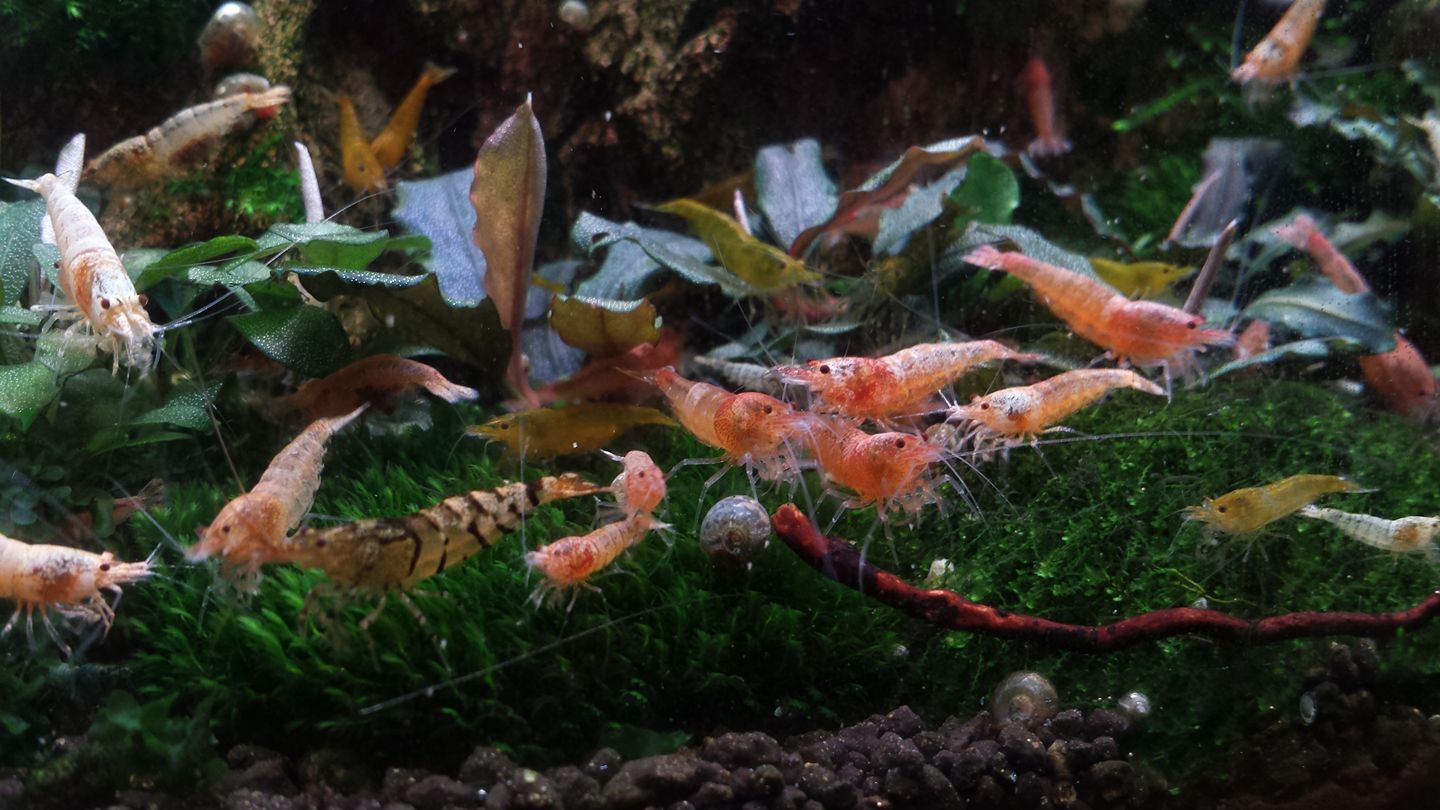
Photo: Lou Herfurth
If you want to hide superfluous aquarium equipment or add a "bush" to a stone structure, the Staurogyne repens (Creeping Staurogyne) works wonders with its low but compact growth. Even if it grows rather slowly, it will soon form beautiful cushions with appropriate pruning. A beautiful, but unfortunately also somewhat unknown and also the smallest of all Echinodours species is Echinodorus purpurea (Dwarf Echinodorus ), which forms reddish leaves and grows to a maximum height of 15 cm. Cryptocorynes are also suitable for the middle, with a selection of smaller species such as Cryptocoryne x willisii, C. Wendtii, C. Beckettii "Petchii" or C. X willisii "nevilli". A very tiny Cryptocoryne is the Cryptocoryne parva, which is ideally suited for planting in mountain foothills, reproduces underground and does not grow taller than 10 cm. This makes it suitable for the foreground as well.
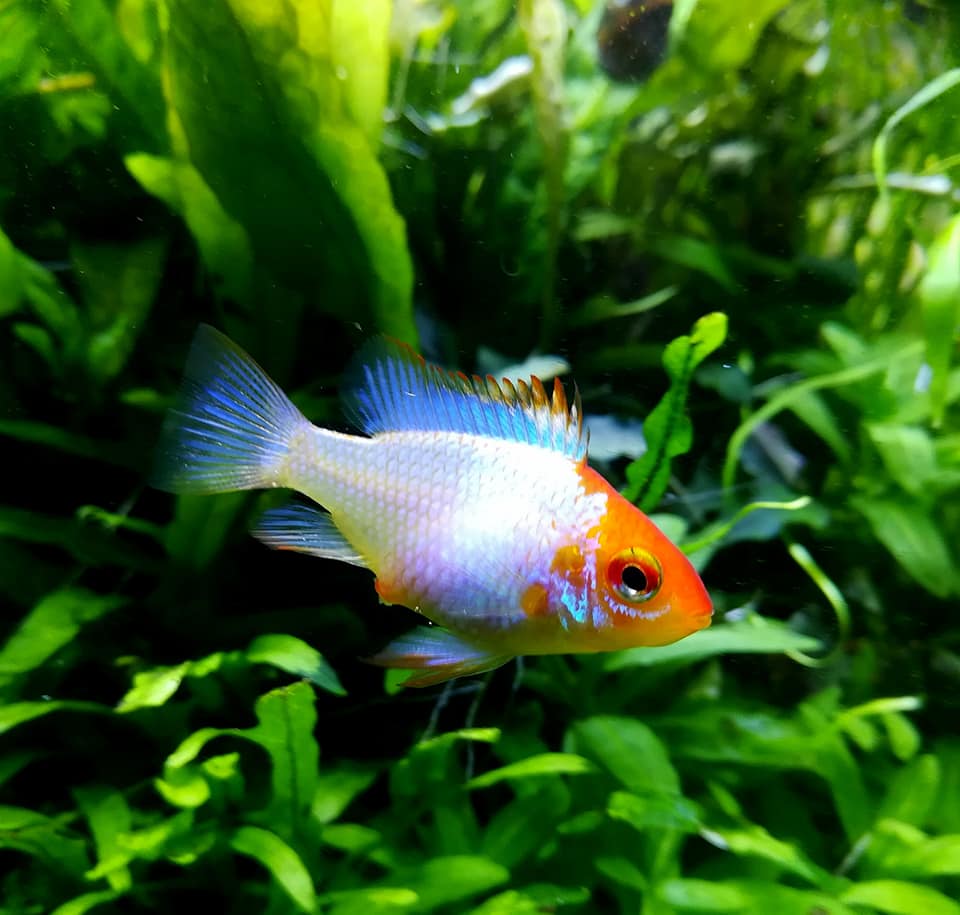
Photo: Lou Herfurth
Small foreground plants and ground covers now round off your new gem: with Hemianthus callitrichoides (Cuban Pearlwort), Marsilea crenata (Dwarf Clover Fern), Glossostigma elatinoides (Australian Tongue-leaf) and Sagittaria subulata "Pusilla" (Dwarf Arrowhead) you create a dense carpet - fix these plants in the substrate with plant needles so that they grow there and continue to reproduce independently.
You can achievegrass effects with Lilaeopsis brasiliensis (Brazilian water plant), Eleocharis parvula (dwarf needle rush), but also with Juncus repens (creeping rush), although this belongs more in the middle aquarium area.
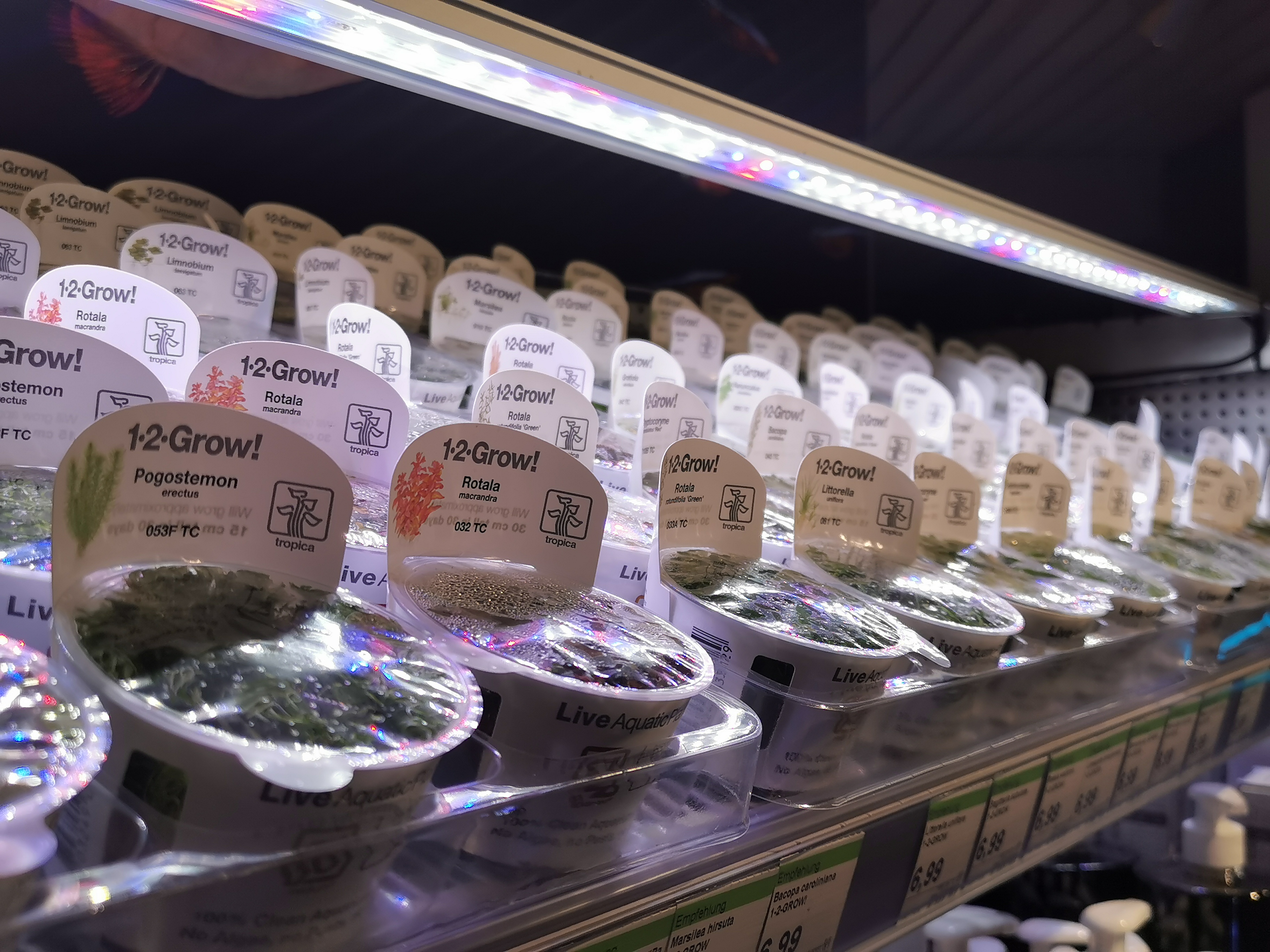
Photo: Lou Herfurth
In-vitro, potted plants and plant bundles
With the now huge range of plant species, we are also confronted with potted plants, sterile in-vitro cultures from the lab and the usual bunch plants. In some way or another we need to pre-treat all of these: Potted plants should be completely freed from the rockwool, the jelly on in-vitro plants is washed off and we should also shorten the bunch plants a little, at least "at the bottom", so that the plant develops new and strong roots and thus a secure hold. Ground covers in pots can be planted particularly well by trimming the rockwool to about 1 cm. Otherwise, it is difficult or impossible to fix their fine roots individually in the bond soil.
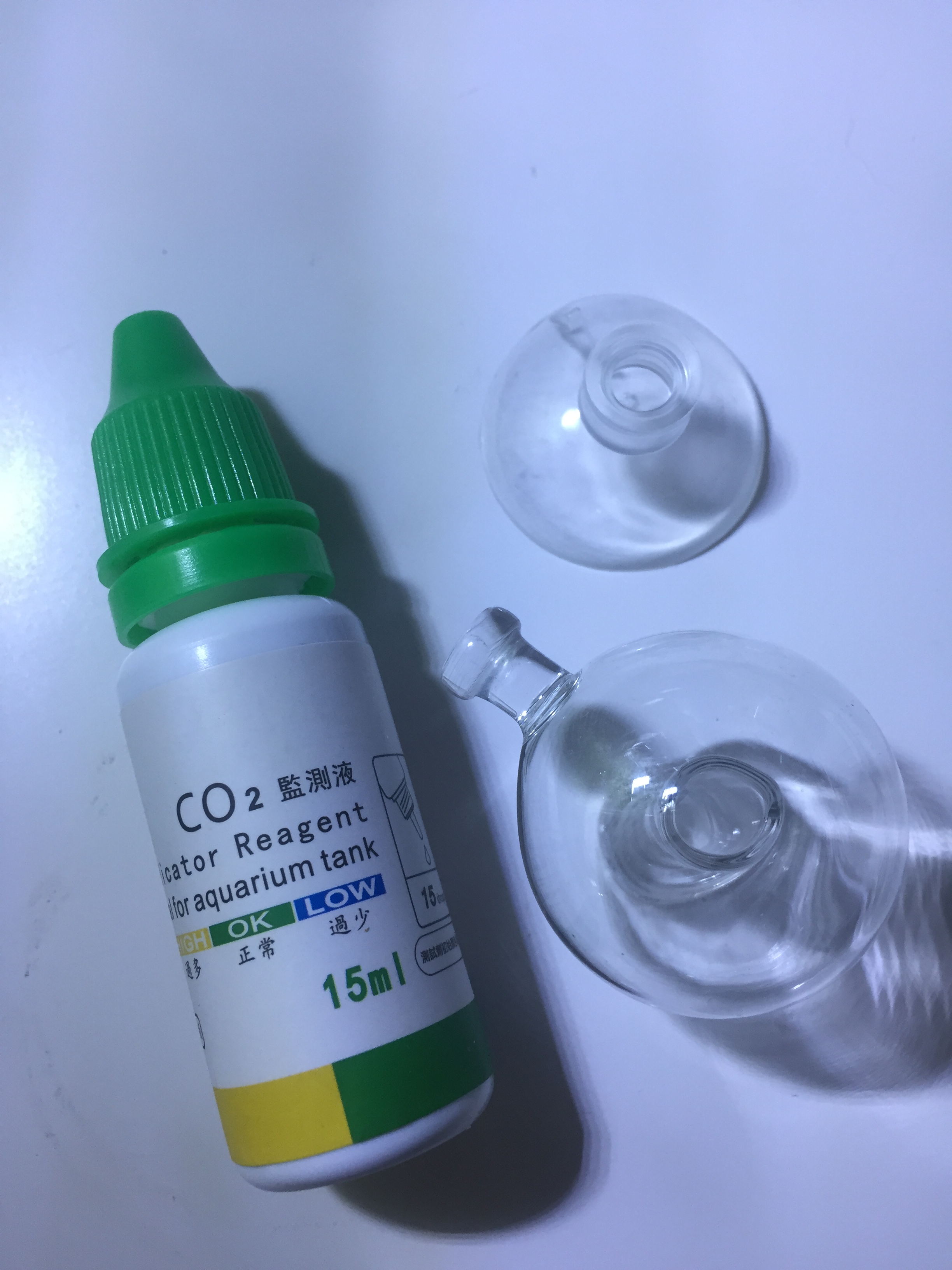
Photo: Lou Herfurth
Whoever lives wants to eat
And it is the same with aquatic plants. Just as the human body depends on a reasonable supply of macro- and micronutrients, a plant also lives on what is offered to it. The only difference is that our aquatic plants do not complain of muscle cramps and headaches, but have to tell us by their appearance "what hour has just struck".
Partial water changes also remove nutrients and add others, and sometimes the proportions are no longer correct. We should keep in mind that some species absorb their food more through the leaves, others more through the roots. Complete fertiliser varieties are usually adapted to a mixed plant aquarium and presuppose that food and fish excretions supplement the value of nitrogen and phosphorus that is partly missing in them, but some specimens have higher demands than others and require separate attention and appropriate fertilisation. Cryptocorynes in particular depend on good root fertilisation, which should be done manually when the former nutrients and minerals from the soil substrate are no longer sufficient. Root capsules can be easily inserted into the substrate next to the Cryptocoryne and thus provide it with nourishment again for a certain period of time. However, not all aquatic plants are satisfied with occasional shock fertilisations. In principle, regular water tests should be used to check the extent to which values are changing and consumption is changing.
The most important substances in the aquarium are the macros: Nitrogen, phosphate, potassium, oxygen, hydrogen, magnesium, sulphur and calcium, which are no longer present in sufficient quantities after the aquarium has been in operation for a certain period of time and with only a small number of fish. In addition, macronutrient uptake is dependent on the presence of a corresponding amount of micros and vice versa. HEEDTA, DTPA and EDTA are different chelators and complexing agents in fertiliser solutions, based on which the possible complex compounds of anions to cations, as well as the resulting nutrient stabilisation and availability in the water, are determined. This affects the frequency of nutrient addition and is also dependent on the acidity (pH) of the water. EDTA, for example, forms particularly stable compounds with Cu2, Ni2, Fe3 as well as CO2 and also prevents the precipitation of iron and phosphate in the form of iron phosphate, which is not available to plants, for example. Therefore, chelators are used for iron stabilisation. In low pH values up to 6 EDTA works well, above that DTPA works. Different stable chelate complexes are therefore suitable for different uses.
Micronutrients are iron, manganese, molybdenum, copper, zinc, boron, nickel, cobalt and chlorine. If important nutrients are missing on one side, the absorption of the others is inhibited or even impossible, as Liebig's minimum law proves. Just as humans need vitamin C for iron absorption, the same is true in the aquarium. Even if humans take more iron supplements when they have an iron deficiency, the body can only absorb the amount of vitamin C that is proportionally available, as this is what makes the iron available to the body in the first place. The growth of plants is generally determined by the resource that is proportionally most scarce. Thus, it does not matter whether a nutrient that is already sufficiently available is added. If another is missing, algae, for example, provide a rich buffet and their limitation is only possible by restoring a full supply of nutrients.
However, it is also true that a plant increases its growth and the formation of colours and shoots the more different growth factors are present in optimal proportions to each other. Iron, for example, is one of the most important micronutrients for plants, and its deficiency is particularly evident in iron chlorosis, in which chlorophyll production in the plant is reduced to inhibited and the leaves visibly lose colour and turn yellow. Several enzyme processes in photosynthesis are therefore dependent on iron as an electron carrier.
But it is not only the combination of micro- and macronutrients that feed plants; the duration and intensity of lighting also play a role, which in turn affects the amount of CO2 required. The higher and more intensive the aquarium lighting and nutrient supply, the higher the CO2 requirement. Although it is possible to keep an aquarium without carbon dioxide, these are plants that generally have a rather moderate light and CO2 requirement, such as Anubia, Vallisneria, Cryptocorynes, Javafarn and a few others. But CO2 alone does not only fuel the plants, it also has an effect on the pH value and the carbonate hardness. Carbon dioxide slightly acidifies the water and thus lowers the pH value. Since most of the animals we keep come from acidic habitats anyway, this is very beneficial. A high carbonate hardness, on the other hand, is strongly buffered against CO2 and pH value fluctuations and stabilises. With commercially available permanent CO2 tests, the CO2 value can be monitored permanently. Especially in well-planted nano aquariums, a lack of CO2 can occur. Plants are partly able to cover their need for carbon dioxide from hydrogen carbonates by releasing hydroxide ions into the water, which in turn leads to an increase in the pH value and brings the water values into an imbalance. This phenomenon, also called "biogenic decalcification", is visually recognisable by white, crumbly lime deposits on the tops of leaves. Such imbalances can put your animals' lives in considerable danger. However, a correct determination of the CO2 requirement and an appropriately adjusted CO2 fertilisation system will usually prevent this from happening in the first place.
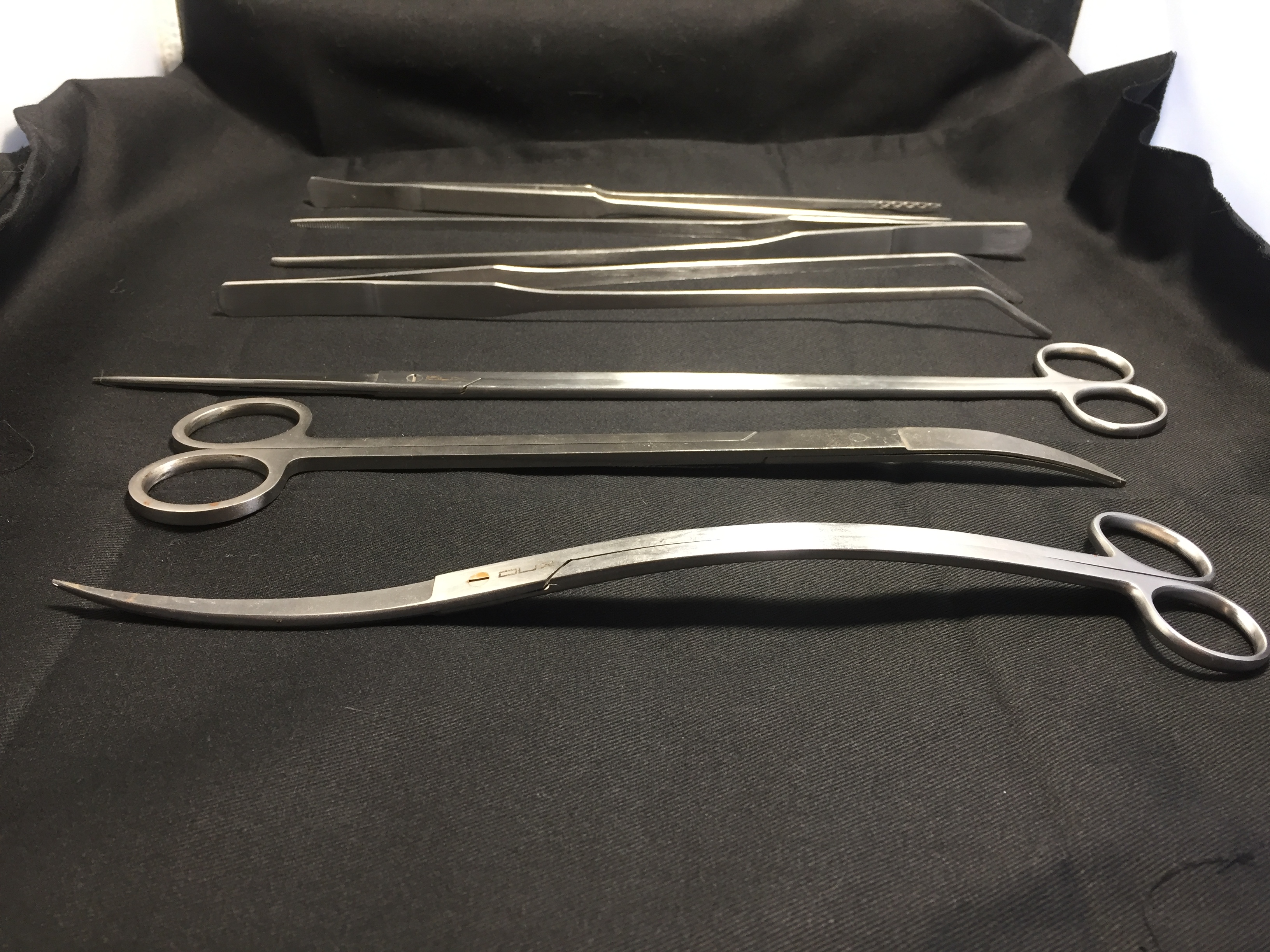
Photo: Lou Herfurth
Scaping Tools
Even if you think that some aquascapers are mutating into surgeons with their selection of aquarium tools, it is precisely these tools that are sometimes indispensable for creating an attractive underwater landscape. Wavy scissors, for example, are very suitable for cutting moss or ground cover into shape, especially in the lower and middle aquarium areas. Tweezers are also indispensable, although these again differ greatly. Long and straight ones are ideal for bund plants as a whole, especially in hard-to-reach areas that would not be accessible by hand; they are also suitable for stroking the nutrient culture of in-vitro plants. Fine and thin tweezers are ideal for inserting individual stems, but also very fine plants, such as Rotala wallichii, into the substrate. Curved tweezers can be used to work on small, awkward edges and crevices.
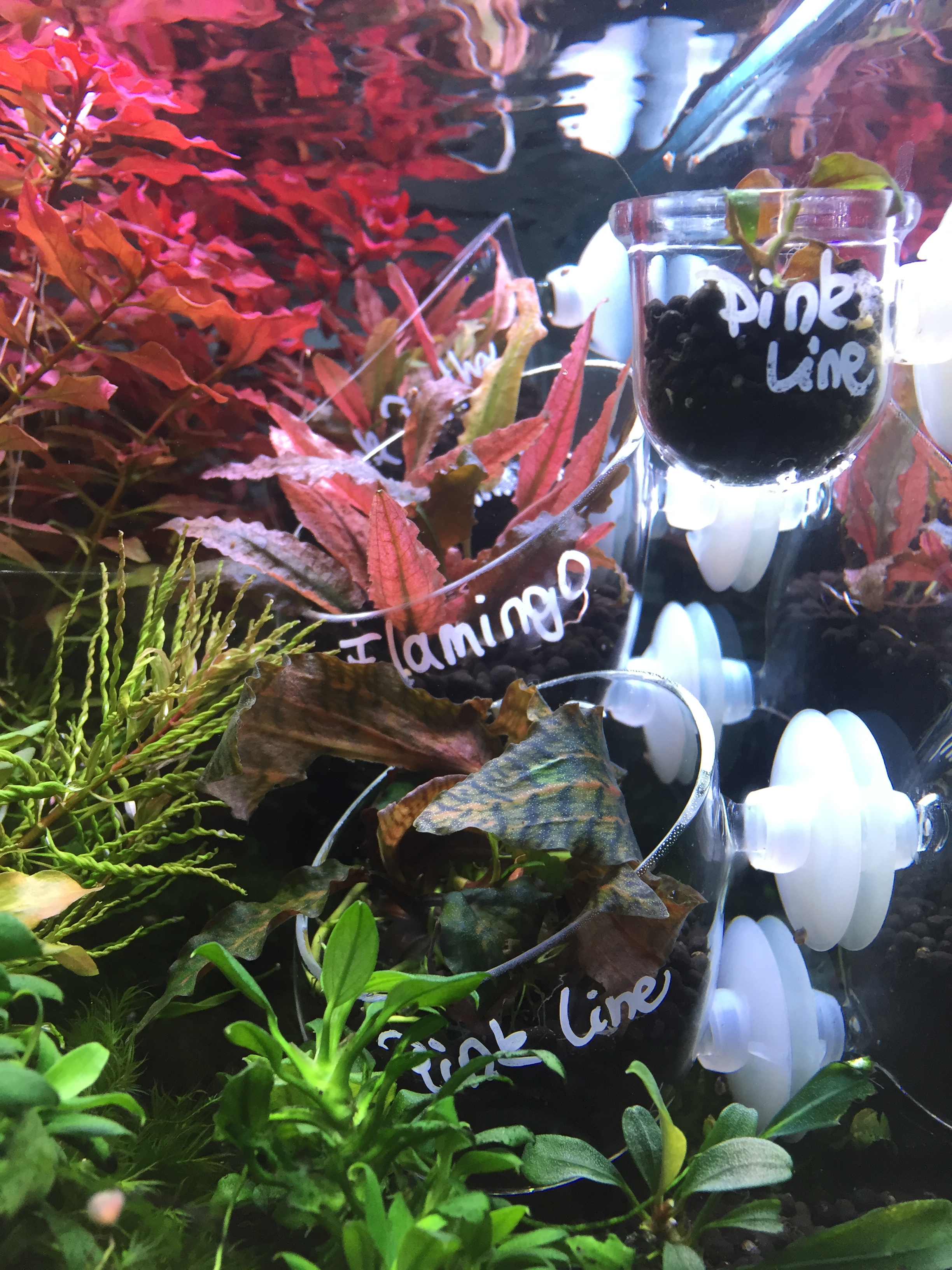
Photo: Lou Herfurth
PlantPots
Occasionally, we want to care for certain offshoots or plant rarities that need special attention. So-called Plant Pots made of glass are the latest discovery and are small glass "flower pots" with a hole in the bottom that allows water exchange. Special plants require special measures and so it is now possible to either present smaller species visually better in the aquarium, but also to observe and care for them more specifically.
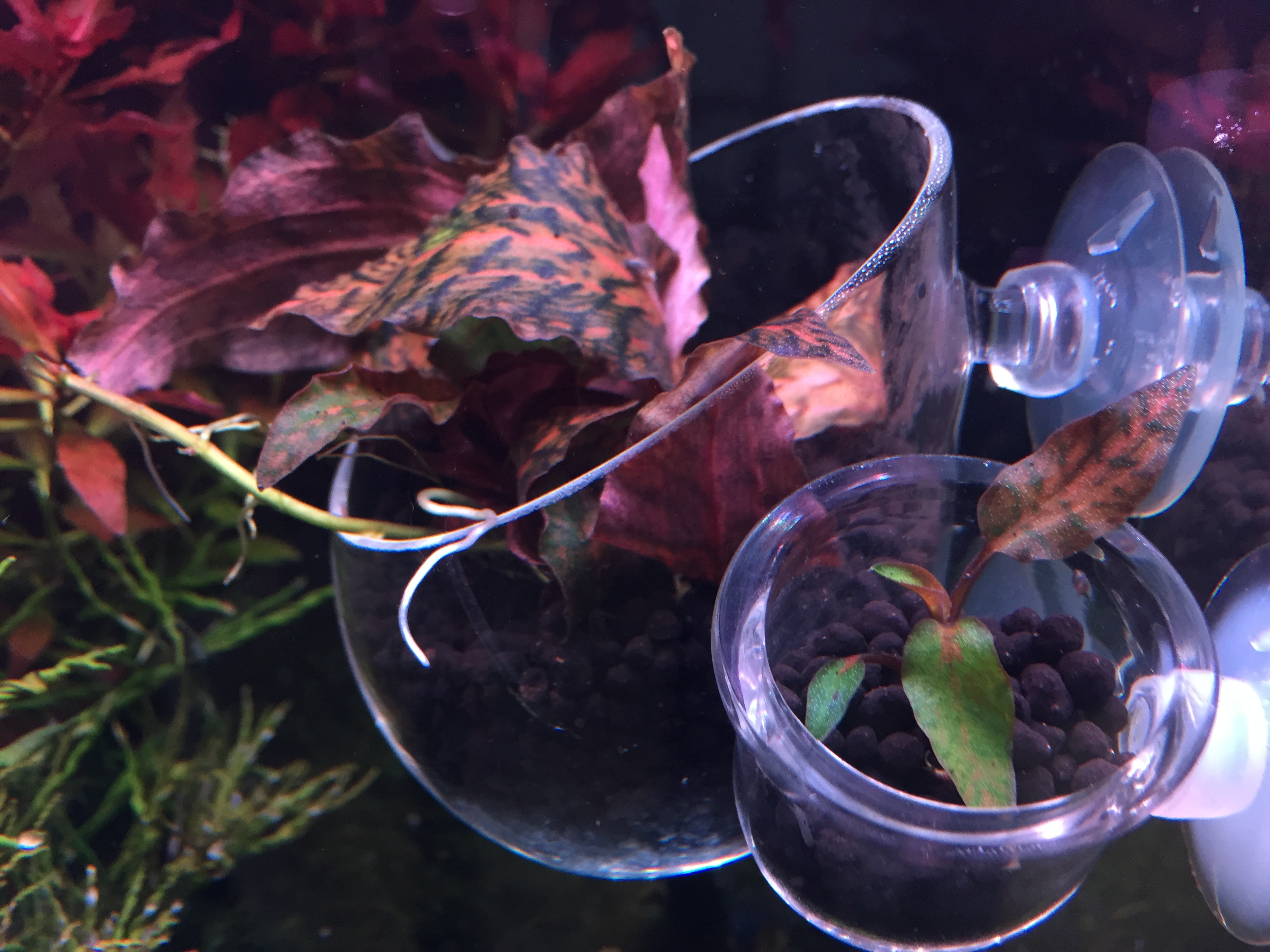
Photo: Lou Herfurth
For example, the Plant Pots can be equipped with soil and root capsules to give rare or slower-growing plants an extra boost. The suction cups can also be used to vary the height at which they are placed and thus bring them even closer under the lighting to achieve maximum light utilisation. The Plant Pots can also be used to grow more than just offshoots; it is even possible to create a very minimalist scape in them from small root remnants and small stones.
Ultimately, beauty is in the eye of the beholder and an aquarium also changes increasingly over time. And this is not only due to rapid technological developments. Where in the past limits were all too often reached or pointed out, thanks to nano-aquaristics we now sometimes have more possibilities and ideas than aquariums. And maybe even a dusty model railway.
